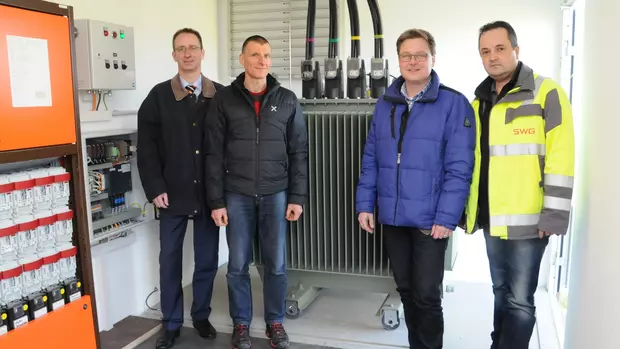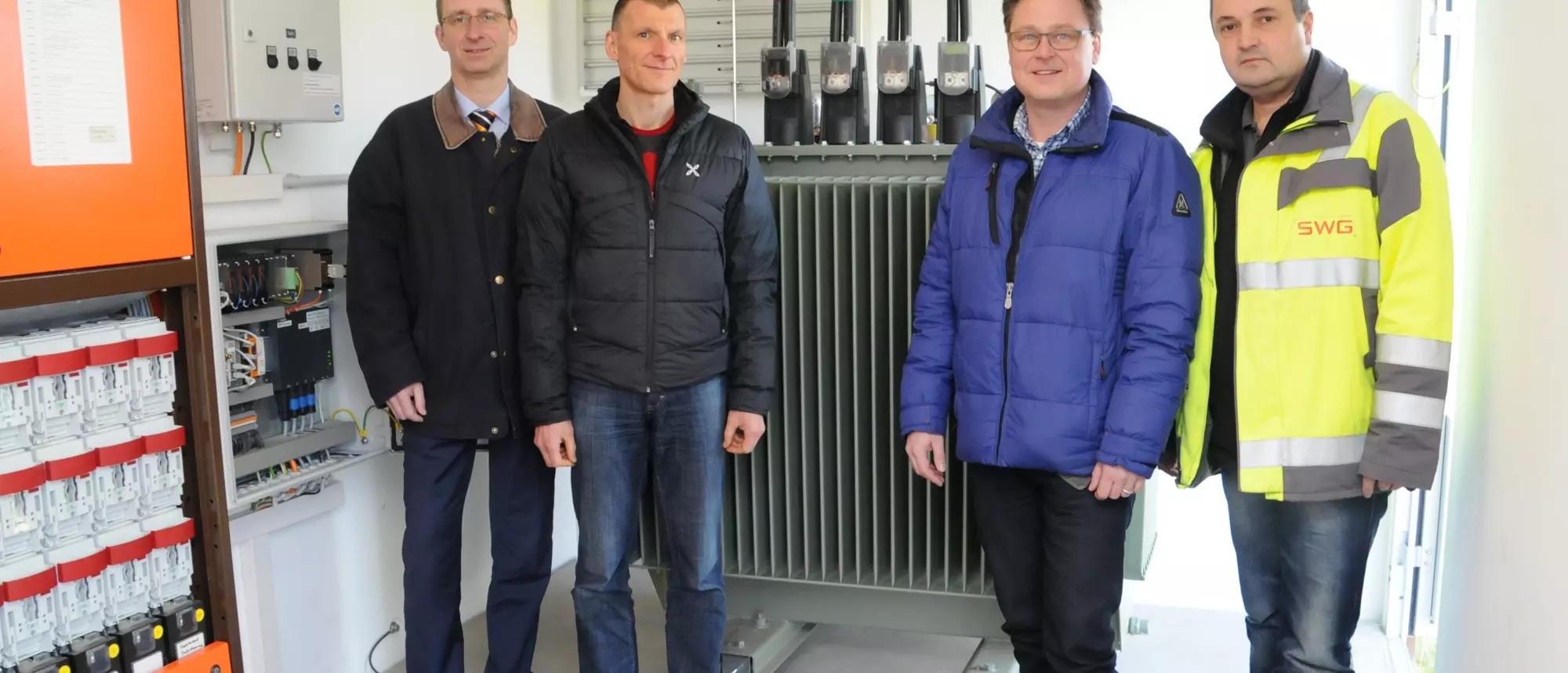
Martin Hajdu, Projektleiter der MIT.N, Michael Klein, Anlagen- verantwortlicher der Stadtwerke Gießen.
Mittelhessen Netz GmbH, a subsidiary of Stadtwerke Gießen AG, has been testing its first controllable local grid transformer in the Heuchelheim district of Kinzenbach for almost a year. The findings are positive: the intelligent transformers mean that costly grid expansion can be largely avoided.
The energy transition is in full swing - also in the Giessen region. As more and more plants for the renewable generation of electricity are being built, the grid operator Mittelhessen Netz GmbH (MIT.N) is equipping its electricity grid for this new task. With the use of a modern controllable local grid transformer.
Why this effort? In principle, the German electricity grid is still designed as a one-way street. Electricity flows from a few large power plants to many customers. "This is currently undergoing a massive shift," says Frank Hoffmann, Managing Director of MIT.N. This is because more and more customers are producing electricity - for example with photovoltaic systems - and feeding it into the grid. As a result, the electricity is now increasingly flowing in the other direction. MIT.N is therefore looking for ways to meet these new demands on the electricity grid with innovative technology.
Just a few years ago, the problem could only have been solved with additional or more powerful cables. But times are changing and MIT.N is currently testing a promising alternative to expensive and complex grid expansion. Since April 2014, a controllable local grid transformer, or RONT for short, has been ensuring stable voltage conditions. "Kinzenbach was the ideal test location for us," explains project manager Martin Hajdu. There are three relatively powerful solar power plants in the village, which push the existing low-voltage grid to its limits on clear sunny days. The electricity fed into the grid has no local consumers and the voltage rises.
Intelligent control unit
Strictly speaking, however, controllable is the wrong term in connection with the new transformer. "It should actually be called 'self-regulating'," clarifies Frank Hoffmann. This is because the unit actually maintains the voltage independently within a preset range. To do this, the intelligent transformer needs some information. It receives this directly from the grid. The experts at MIT.N had measuring devices installed at three neuralgic points, which constantly measure the voltage and send the values to the transformer's control centre. Thanks to this data and with the help of a clever algorithm, a very precise picture of the voltage conditions at each point in the grid is created. This is extremely important, as the voltage may only fluctuate within a very narrow band - only ten per cent deviation is permitted in both directions.
What exactly happens? When the sun shines, the photovoltaic systems supply plenty of electricity, which leads to an increase in voltage in the grid. The sensors report this to the transformer. After a brief calculation, the mimic mounted on the RONT starts to move: A special stepper motor moves the contacts and thus changes the transmission ratio between the incoming medium voltage and the low voltage to be dissipated. If a cloud moves in front of the sun, the feed-in power of the photovoltaic systems drops abruptly - with the result that the voltage in the local grid drops. The RONT reacts to this with the opposite movement and regulates the transformation ratio in the transformer back in the other direction.
Cheaper than new cables
The transformer has now been operating successfully for ten months. "Based on our experience, we consider RONT technology to be a real alternative to grid expansion in Heuchelheim-Kinzenbach," says Frank Hoffmann happily. In fact, the technology offers a decisive advantage: in the majority of cases, a controllable local grid transformer is likely to be cheaper than reinforcing the grid, with the RONT in Kinzenbach costing around 80,000 euros including the new station building. "For the effective additional cost of an RONT compared to a conventional transformer, we could lay just 600 metres of cable," calculates Frank Hoffmann. Quite apart from the financial benefit, local residents are delighted. Because if no new cables are needed, MIT.N does not have to tear up the road.
In future, MIT.N will replace conventional local network transformers with those of the new, intelligent generation whenever it makes sense to do so. Because many other grid operators have also recognised the potential of the technology, the prices for the smart units should also fall simply because of the quantities involved. The grid experts at MIT.N have thus found a good solution to the problem of expensive grid expansion caused by the energy transition.

